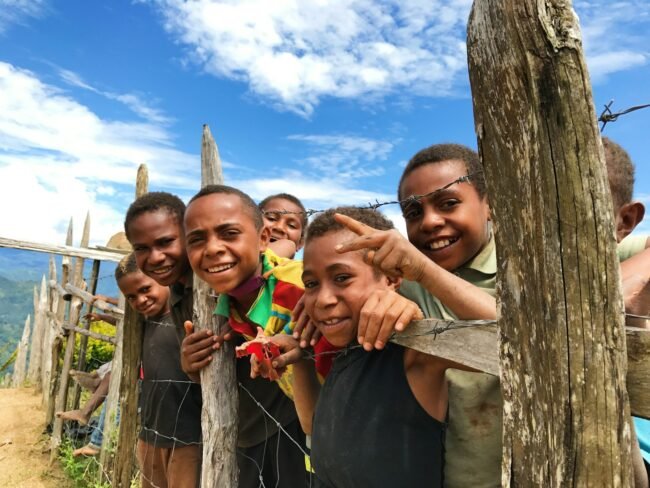Valentine’s Day Impact on Underage Children: A Double-Edged Sword (2025)
Published on: May 18, 2025 | Author: Love and Health Future Team
Valentine’s Day, celebrated globally on February 14th, is traditionally a celebration of love, affection, and romance. Yet, as commercialism and media influence grow, the holiday’s reach has extended even to the youngest members of society. Underage children are increasingly exposed to the themes of love and relationships through school events, advertising, and social media.
At Love and Health Future, we explore how Valentine’s Day can act as a double-edged sword for young children. This blog delves into both the positive and negative impacts of the holiday and offers practical advice for parents and educators to foster a healthy environment for kids during this season of love.
The Positive Effects of Valentine’s Day on Children
1. Teaching Love, Kindness, and Empathy
Valentine’s Day can be a meaningful opportunity to teach children the universal values of love, kindness, and appreciation. When schools encourage students to exchange handmade cards or tokens, it fosters inclusivity and a culture of empathy. Research from the American Psychological Association (APA) shows that promoting gratitude and kindness in children leads to better emotional health and social bonding.
2. Boosting Creativity and Self-Expression
Valentine-themed crafts and card-making stimulate a child’s imagination and creative expression. Such activities not only nurture artistic skills but also promote emotional articulation—helping children learn how to convey positive feelings toward others.
3. Developing Social and Communication Skills
Participating in Valentine’s Day celebrations encourages children to interact with their peers in structured settings. Activities like classroom parties and group crafts foster communication, cooperation, and teamwork, essential social skills that contribute to future success.
4. Promoting Inclusivity
Schools that implement “valentines for everyone” policies help cultivate an environment of inclusiveness. Teaching kids to appreciate each classmate regardless of friendship status helps combat cliques and reduces social isolation.
The Negative Effects of Valentine’s Day on Children
1. Social Pressure and Emotional Stress
Commercialization around Valentine’s Day often leads children to feel pressure to participate or compete, creating anxiety if they do not receive enough valentines or gifts. This early exposure to social comparison can be harmful to their developing self-esteem.
2. Premature Exposure to Romantic Relationships
Valentine’s Day media often emphasizes romantic love, which may not be age-appropriate for younger audiences. Early romantic notions can skew children’s perceptions of relationships and create unrealistic expectations about love.
3. Feelings of Exclusion and Loneliness
Despite inclusive efforts, some children inevitably feel left out if they receive fewer cards or gifts. Such experiences can negatively impact their confidence and sense of belonging, contributing to social withdrawal.
4. Materialistic Values and Commercial Influence
The bombardment of Valentine’s-themed merchandise teaches children to associate love with material possessions. As per a Child Mind Institute report, over-commercialization impacts children’s mental health by fostering consumerist behavior over authentic emotional connection.
5. Influence of Social Media
Older children exposed to curated Valentine’s Day content on platforms like Instagram and TikTok may experience FOMO (Fear of Missing Out). This can fuel feelings of inadequacy, envy, and depression, as highlighted by studies from the Common Sense Media foundation.
Guidelines for Parents and Educators to Minimize Negative Effects
1. Shift the Focus to All Forms of Love
Valentine’s Day should celebrate love in all its forms—friendship, family, community—not just romance. Encourage kids to create cards for parents, teachers, grandparents, or even essential workers, promoting a broad understanding of love and appreciation.
2. Enforce Inclusivity
Schools should adopt policies requiring that valentines be shared with every classmate. This simple step fosters a sense of unity and minimizes feelings of exclusion.
3. De-Emphasize Material Gifts
Teach children that love is expressed through actions, words, and thoughtful gestures rather than material possessions. Encourage making handmade cards, writing heartfelt notes, or doing acts of kindness.
4. Supervise and Discuss Social Media Content
Help teenagers understand that what they see online is often curated and idealized. Open conversations about authenticity can protect kids from feeling inadequate or pressured by unrealistic portrayals of love and relationships.
5. Address Feelings of Sadness or Exclusion
If children feel left out, validate their emotions rather than dismissing them. Empathetic listening and reassurance that their self-worth isn’t defined by external validation are crucial steps toward building resilience.
6. Use Valentine’s Day as an Educational Tool
Introduce age-appropriate lessons about healthy relationships, consent, personal boundaries, and self-love. Equip children with the knowledge to navigate emotional experiences constructively.
How Schools Can Foster Healthy Valentine’s Day Celebrations
- Classroom Card Exchanges: Mandate that every child receives a card to ensure inclusivity.
- Kindness Initiatives: Use Valentine’s Day as a springboard for kindness campaigns, such as writing gratitude notes to teachers and staff.
- Educational Lessons: Teach students about the origins of Valentine’s Day, emotional intelligence, and empathy.
- Friendship Day Alternatives: Reframe the celebration as “Friendship Day” or “Kindness Week” to de-emphasize romantic aspects.
For deeper insights into how positive emotions affect children’s mental well-being, check out our guide: Love Health and Happiness Connection.
Frequently Asked Questions (FAQs)
Is it appropriate for schools to celebrate Valentine’s Day with young children?
Yes, if handled inclusively and age-appropriately. Focus on friendship, kindness, and community rather than romance.
How can parents help their children during Valentine’s Day?
Parents should encourage non-materialistic expressions of love, validate children’s feelings, and reframe the holiday as a celebration of all types of relationships.
What are the risks of early exposure to romantic themes?
Premature exposure can confuse children about the nature of healthy relationships and lead to unrealistic expectations. It’s vital to provide proper guidance and context.
Can Valentine’s Day celebrations improve a child’s social skills?
Absolutely. Properly organized celebrations can foster inclusivity, empathy, and positive peer interaction.
Conclusion: Striking a Healthy Balance
Valentine’s Day offers a unique opportunity to teach children about love, kindness, and empathy. However, if left unchecked, it can also lead to feelings of inadequacy, exclusion, and materialism. By reframing the holiday to emphasize inclusivity, friendship, and self-worth, parents and educators can ensure that Valentine’s Day leaves a lasting, positive impression on young minds.
For more insights into nurturing love and emotional health among children, visit our related article: Celebrating Love: Exploring the Different Days of Valentine’s Week.
Let’s work together to celebrate all forms of love and help our children grow into compassionate, confident individuals!
Love and Health Future – Building Stronger Hearts and Healthier Minds for a Brighter Tomorrow.




